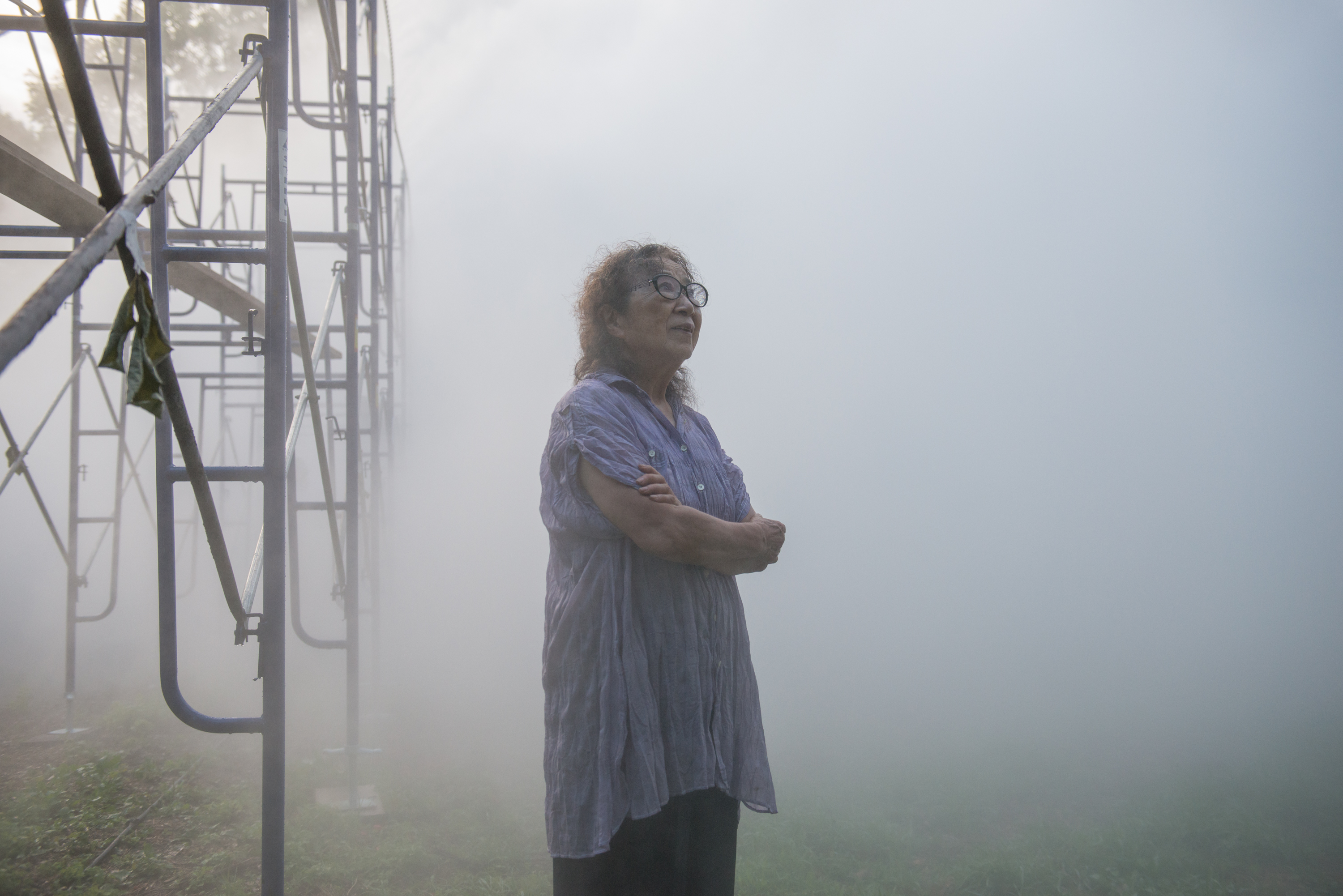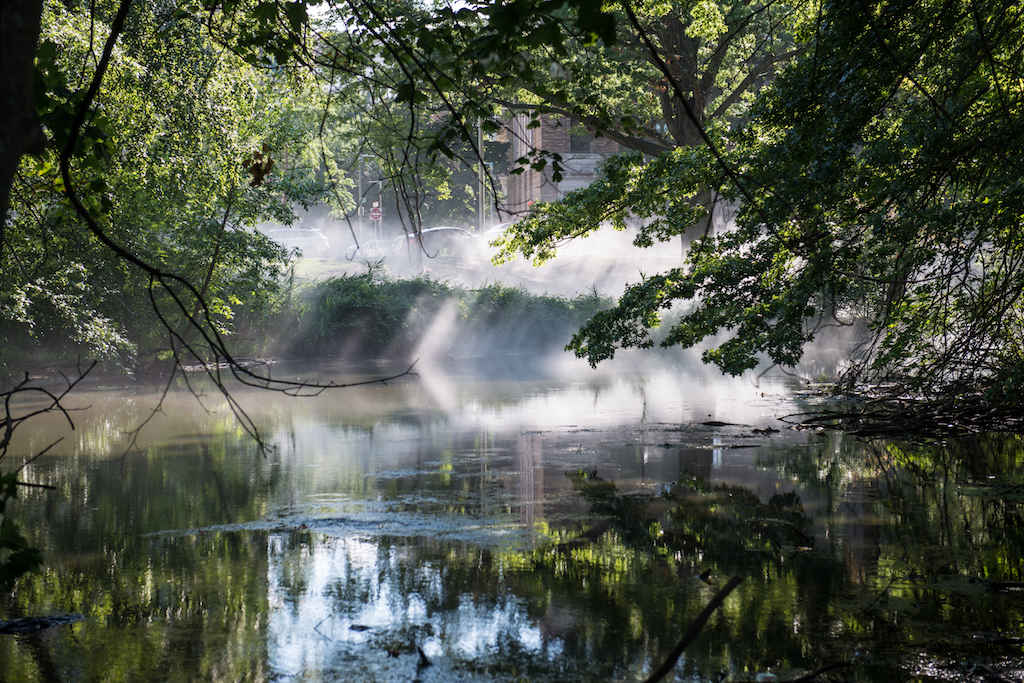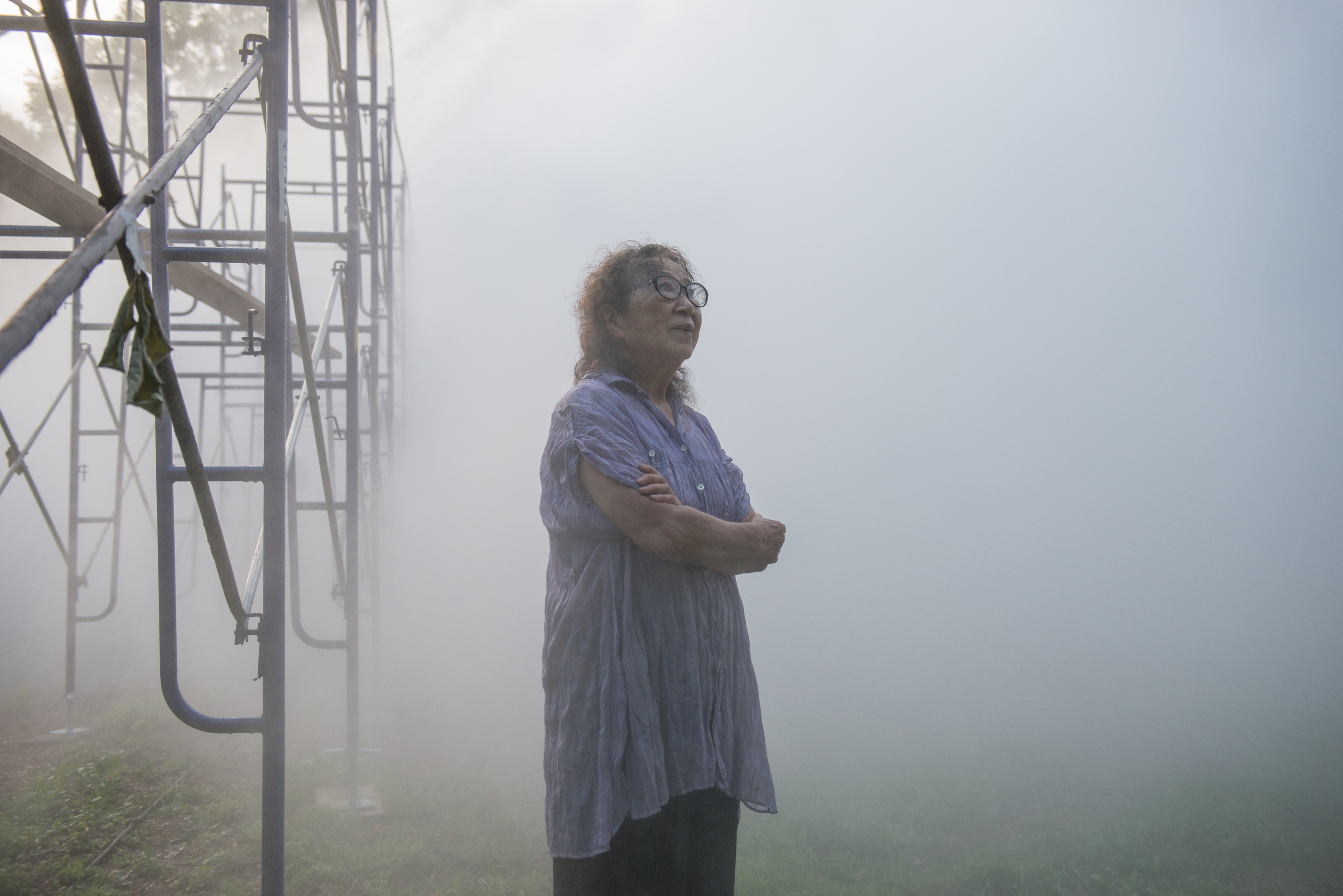[ad_1]

Fujiko Nakaya in Franklin Park.
MELISSA OSTROW
The fields of green and the varied topography of the Emerald Necklace, Boston’s largest park system, belie its history as a marshland. Before Frederick Law Olmsted, the famed 19th-century landscape architect who helped build New York’s Central Park, intervened in the landscape, the park area was rather inhospitable—a sewage dump could once be found where the city’s Museum of Fine Arts is now situated, for example. Instead of landfilling the terrain and constructing an entirely new, artificial environment, Olmsted spent nearly 20 years—the project lasted from 1878 to 1896—utilizing water-engineering methods to maintain the park’s natural character. He believed that it was possible—and important—to sculpt and shape the natural world without destroying or altering it beyond recognition.
Artist Fujiko Nakaya has often held a similar mindset to Olmsted. For her first-ever exhibition in Boston, the Tokyo-based artist has made a selection of site-specific fog sculptures, which are on view at the Emerald Necklace through October 31. Nakaya—who debuted her signature fog invention at Expo ’70 at the world’s fair in Osaka, Japan, and later patented her pure water fog creations—works at the intersection of art and science. Her new fog works were crafted with the park’s history in mind. She said in an email to ARTnews that the sculptures, like Olmsted’s design, represent a “dialogue with nature.”
“Walking in the park for a site study, I saw many landforms sculpted by retreating glaciers—many geological features that Olmsted respected and revitalized as design,” Nakaya said. “[The Emerald Necklace] is a form defined by the interactions between humans and nature.”
Nakaya’s project is titled “Fog x FLO” and it comprises five new commissions positioned across five miles of parkland. It’s the artist’s most expansive project to date, according to independent curator Jen Mergel, who organized the project with the Emerald Necklace Conservancy. The sculptures are installed at various locations, including the Fens, Leverett Pond, Jamaica Pond, the Arnold Arboretum, and the Franklin Park Overlook—each selected by Nakaya as a site for her work. At every spot, the fog billows and swells around multifarious forms and structures.
“Sometimes [the fog] floats to the nearby wilderness that Olmsted left untouched—I imagined the fog dancing on the site,” Nakaya said of the Overlook. At that particular site, the fog drifts around a stone ruin, making for an elegant, dramatic scene that’s stopped some park visitors in their tracks.
Nakaya’s exhibition also marks the 20th-anniversary year of the Emerald Necklace Conservancy. When they were in the early stages of planning commissioned artworks for the park, Mergel and members of the organization were looking for an artist with a deep appreciation for the nature within the Emerald Necklace. Mergel described the public installation as a “gateway to tell the story of Olmsted’s original design.”

The Fens Fog Sculpture.
MELISSA OSTROW
“She is positioning her nozzles and controlling their pressure, timing, and location to allow specific volumes of vapor into the air to show you certain parameters and respond to different elements,” Mergel said. “Nakaya is working with the existing genius of the place as well, and doing it with water.”
Throughout this presentation, the Conservancy is also piloting a website and an app that help visitors find Nakaya’s sculptures and more generally navigate the Necklace itself. (Nakaya’s sculptures are so deftly integrated into their environments, some visitors might not even be aware that the fog works are art.) Karen Mauney-Brodek, the president of the Emerald Necklace Conservancy, told me that many Bostonians aren’t familiar with the park system’s history.
“We were hoping that this would both be a celebratory, happy, fun experience and a moment to see the parks anew,” she said.
Mergel noted that the artist has long-challenged the notion that art is stable and static. A pioneer in numerous respects, Nakaya has headed Experiments in Art and Technology in Japan, and she opened Japan’s first video gallery, Gallery SCAN, in 1980.
“It’s exciting for Boston to host something so important,” Mergel said. “I hope Bostonians take a sense of pride in the significance of this presentation.”
[ad_2]
Source link

